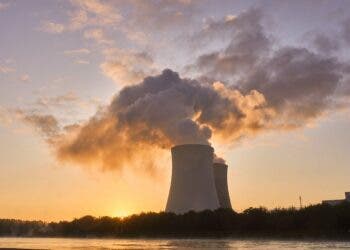Just one week ago, a stunning announcement marked an unexpected marriage between nuclear power and artificial intelligence (AI). The Three Mile Island nuclear plant, famous for being the site of the worst nuclear accident in U.S. history, was due to reopen. A tech giant, Microsoft, was behind the deal. Microsoft needs a lot of energy for its AI data centers, and Three Mile was a perfect fit.
But this is just the tip of the iceberg. Nuclear energy may be close to a resurgence, and AI is the catalyst.

AI goes nuclear
This Three Mile Island deal is part of a broader effort to revive dormant nuclear power plants in the U.S. These initiatives aim to provide low-carbon electricity while fulfilling ambitious climate goals, raising important questions about the challenges of restarting shuttered nuclear plants safely.
This trend came as a big surprise.
Since 2012, more than a dozen nuclear plants in the US have shut down, largely due to economic challenges. Nuclear energy is a low-carbon energy source, but the energy is simply too expensive in today’s market (especially as other sources are sometimes subsidized).
However, that seems to be changing. The resurgence of nuclear energy is now being driven by the growing energy demands of AI data centers and tech companies committed to reducing their carbon footprints, such as Microsoft’s pledge to be carbon-negative by 2030.
Palisades Nuclear Plant, an 805-megawatt facility in Covert, Michigan, shut down in 2022, is also about to be reopened. This is backed by a $1.5-billion conditional loan from the U.S. Department of Energy (DoE) and this energy will also be used for AI.
Data centers next to plants just make sense
Nuclear energy provides a constant and reliable source of electricity, crucial for powering the energy-intensive operations of data centers. Unlike renewable sources such as solar or wind, which can be intermittent, nuclear power delivers a steady, large-scale supply of low-carbon electricity, helping tech companies meet both their energy needs and climate commitments. For companies who rely substantially on AI, this reliability can be worth more than having access to cheaper energy.
OpenAI, the company behind ChatGPT, pitched the White House a plan to build multiple 5 gigawatt data centers. That would take around five nuclear plants to power. The data centers would be built across the U.S., Bloomberg reports, and it would be an unprecedented data center rollout.
A new Energy Department memo also cites the resurgence of US nuclear power. In fact, it projects a whopping 25 gigawatts of new data centers in the US grids by 2030. The memo also mentions that placing these centers near nuclear plants is an “ideal solution” because it’s efficient and reduces the need for massive investments in grid updates. By locating data centers close to nuclear facilities, companies can also reduce transmission losses and improve overall energy efficiency, creating more sustainable and reliable infrastructure for AI development.
However, not all of this is about new technologies.
More than just AI
After plateauing for some 15 years, America’s electricity consumption is starting to increase once again. This is due to a number of different factors including hotter summers, data centers, electric vehicles, and more. It’s also something that’s not restricted to the US. At Climate Week in New York, some of the world’s biggest banks and financial institutions pledged to support the COP28 climate goal of tripling global nuclear energy capacity by 2050.
Globally, nuclear energy production is around the same level it was 20 years ago, but its trajectory hasn’t been smooth. Nuclear energy production had been stagnating, then steeply decreased following the 2011 Fukushima disaster. Over, the past decade, though, production has been increasing.
In the US, subsidies from President Biden’s Inflation Reduction Act and bipartisan infrastructure law are supporting this resurgence of nuclear power. However, this isn’t the first time such a resurgence has been touted.
Previous administrations have made attempts to position nuclear energy as a key player in the country’s future energy mix. But the industry never fully rebounded after the Three Mile Island incident, nor did it recover from the stigma attached to high-profile nuclear accidents like Chernobyl and Fukushima. Today’s resurgence, however, comes with a new twist: the rise of AI and the corresponding need for more energy.
Concerns come with the benefits
The resurgence also brings its own set of challenges.
Safety concerns continue to hang over the industry. The Three Mile Island accident, though relatively contained, left a lasting impression on the American public. The Fukushima disaster in 2011, caused by a tsunami, reignited fears about the safety of nuclear reactors, especially in the face of natural disasters and unforeseen events.
Even with the robust safety systems of modern reactors, there are still concerns about aging infrastructure. Many of the U.S.’s nuclear plants are decades old, and restarting them requires extensive safety checks, maintenance, and modernization. Critics argue that these older plants might not be suitable for modern needs, and restarting them without substantial upgrades could be risky.
Lastly, it’s not just about restarting or expanding existing plants. Several startups (including Oklo, backed by OpenAI CEO Sam Altman), want to implement new nuclear technologies, such as Thorium or salt reactors.
Nevertheless, it’s one of the most promising moments for nuclear power (in US and in the world) in a few decades. Whether this will bmove forward or not, however, remains to be seen.






